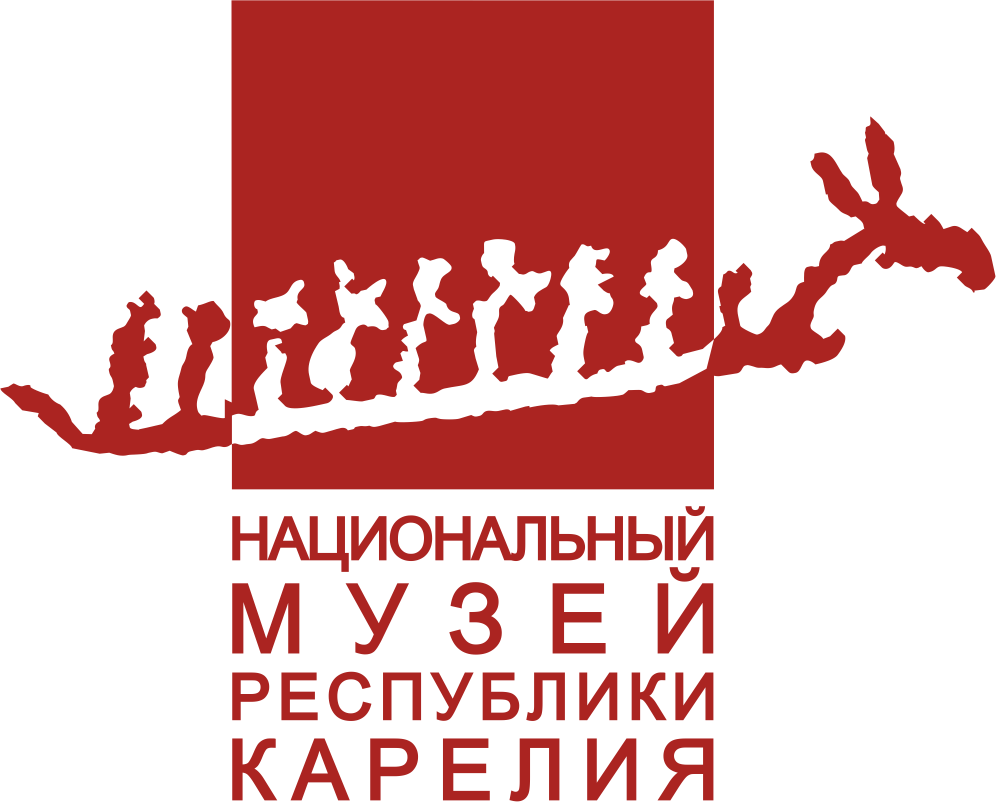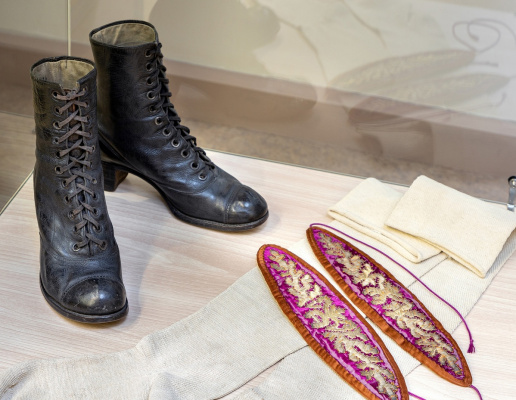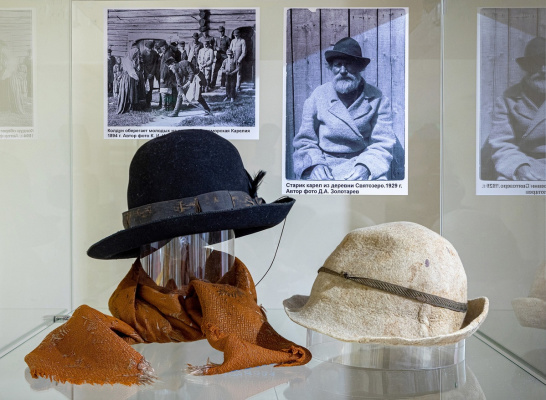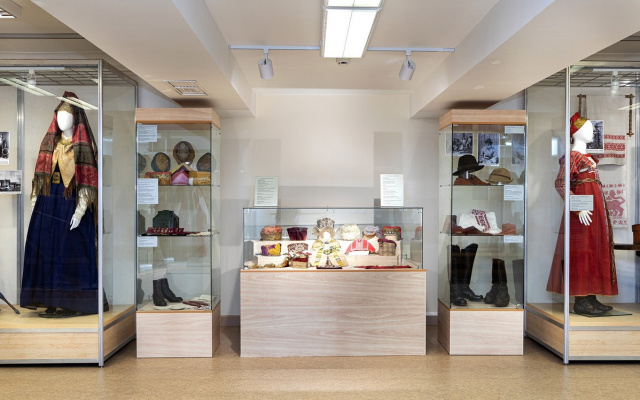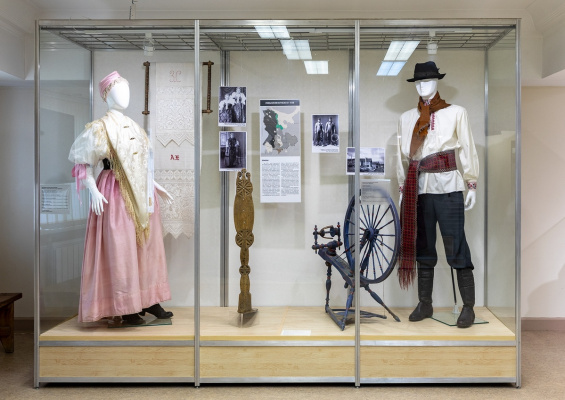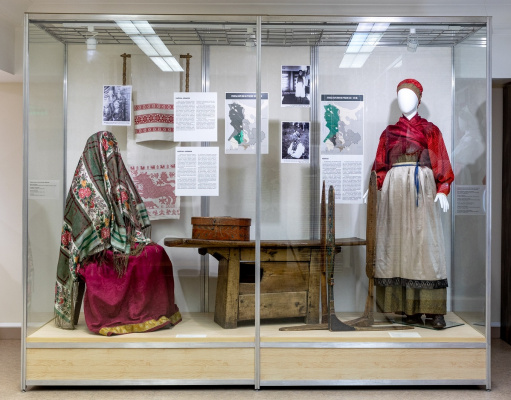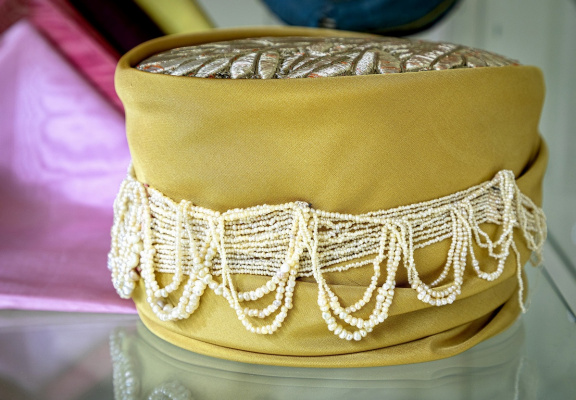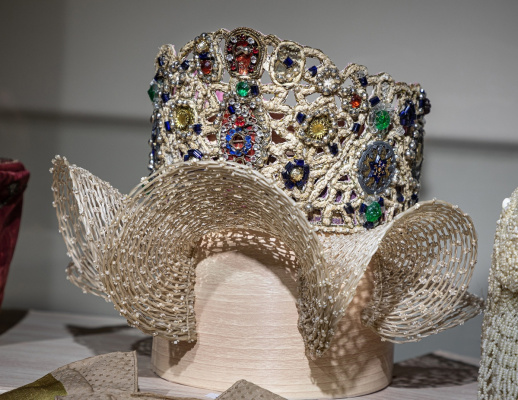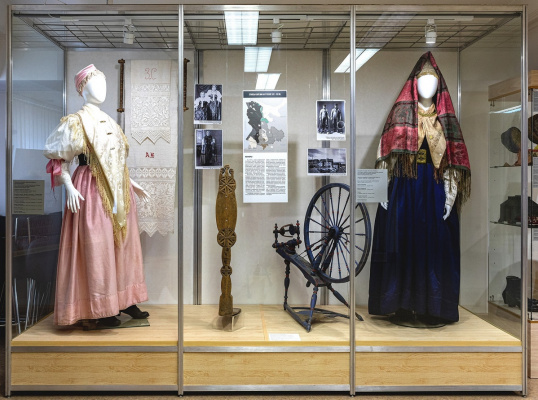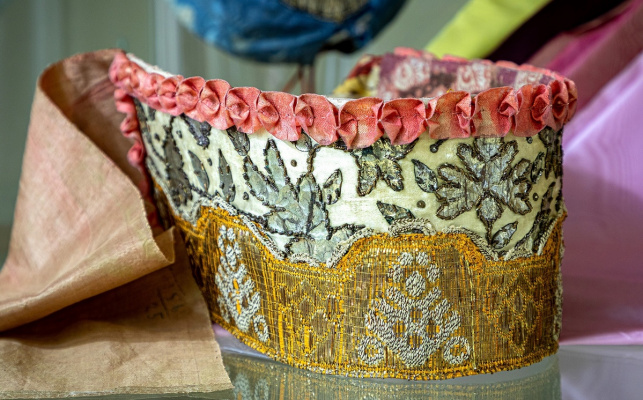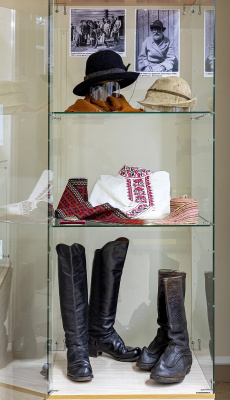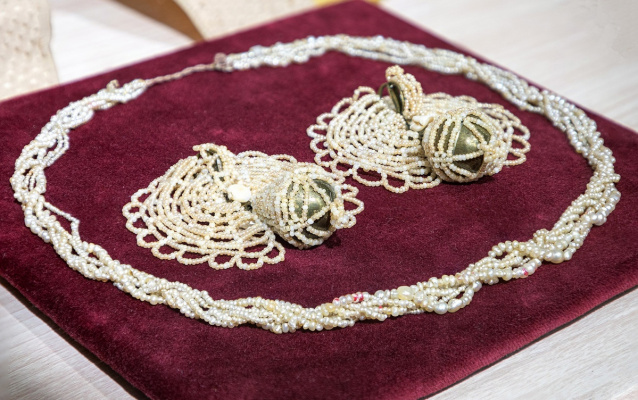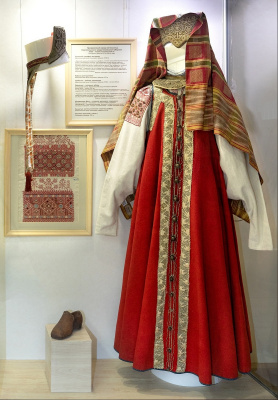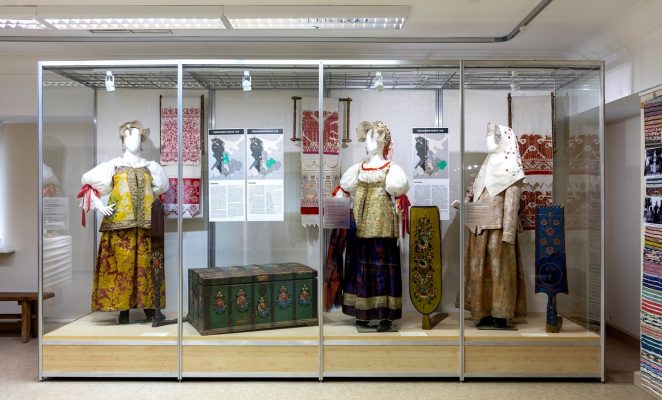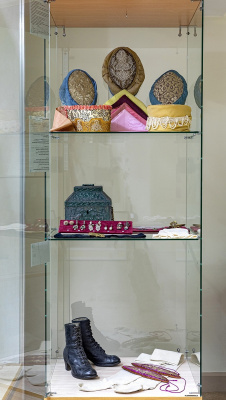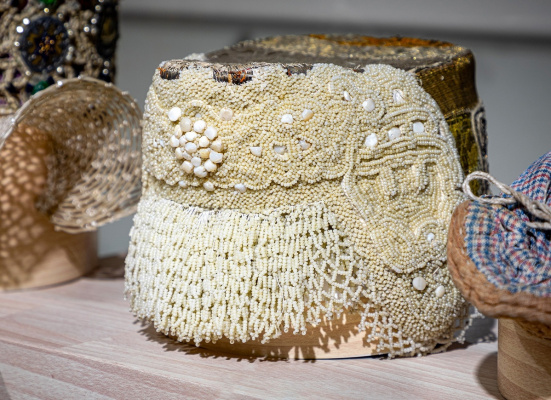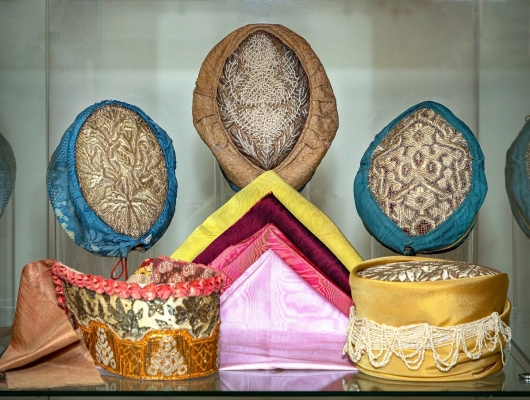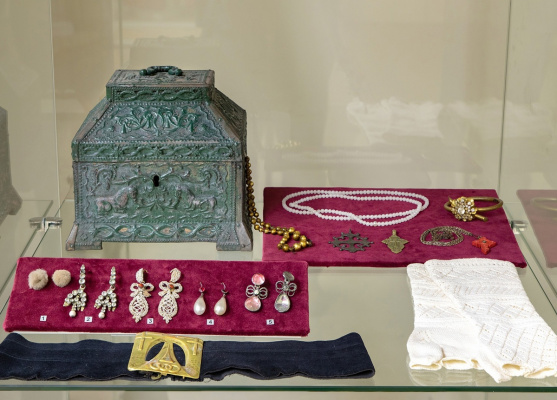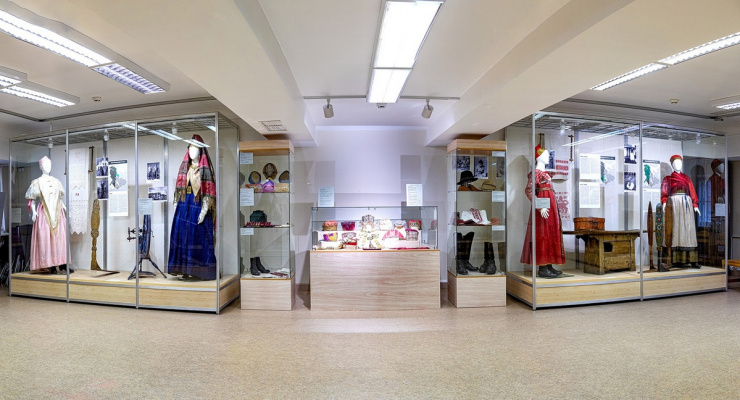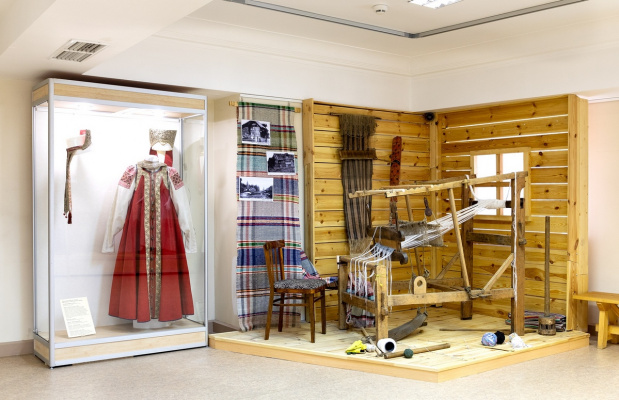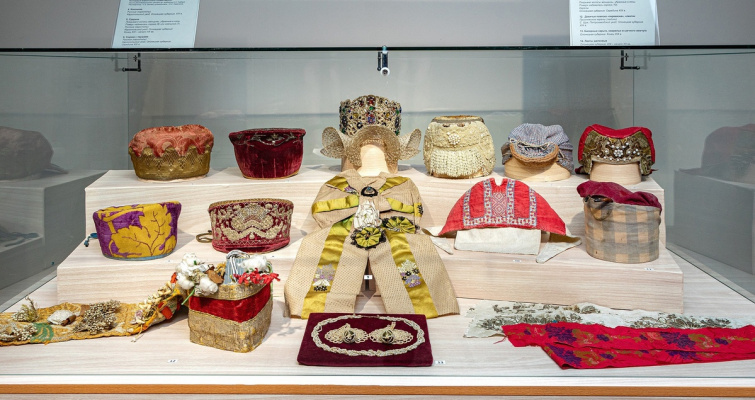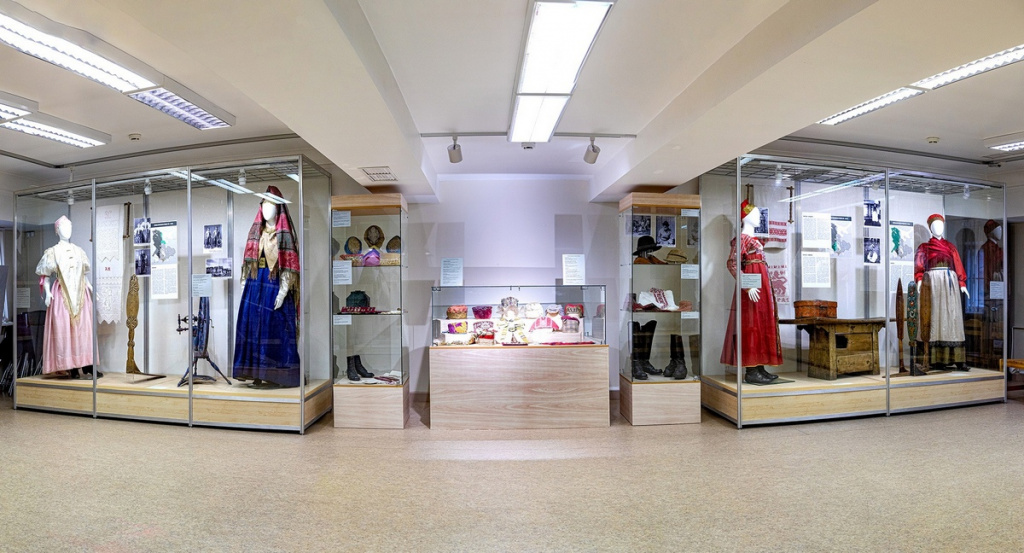 For centuries Karelians, Vepsians and Russians lived side by side in the Russian North. Their economic life, way of life and customs were similar in many ways - because they were caused by nature itself and the interaction of man with it. All the more interesting to know the distinctive features that give each nation its own uniqueness, identity. What distinguishes one nation from another most vividly? Language, features of buildings and settlements, the way people decorate objects used in everyday life and traditional costume. This section of the ethnographic exhibition of the museum is devoted to traditional costumes and the best examples of arts and crafts.
For centuries Karelians, Vepsians and Russians lived side by side in the Russian North. Their economic life, way of life and customs were similar in many ways - because they were caused by nature itself and the interaction of man with it. All the more interesting to know the distinctive features that give each nation its own uniqueness, identity. What distinguishes one nation from another most vividly? Language, features of buildings and settlements, the way people decorate objects used in everyday life and traditional costume. This section of the ethnographic exhibition of the museum is devoted to traditional costumes and the best examples of arts and crafts.
The pursuit of beauty has always led to respect for craftsmanship. It was important for people, who appreciated the opportunity to buy a masterpiece, to show themselves at their best. On her way to the meeting, a girl was carrying a painted spinning-wheel, bought and given to her by her father - the whole village saw it. The man wanted to show his wealth by dressing his wife in purchased shawls and silks. The young woman wanted to be beautiful, to impress her fellow villagers and the guests who came to the holiday. The exhibition offers a look at how people who lived in Karelia in the past centuries presented themselves to the world.
Girls in marriage and young women in the first year of marriage were supposed to have the most elegant costume. The maidenhood period was traditionally the most carefree, free in the life of any woman and required maximum attention to herself, and hence the family's financial investment in maiden "pokrut" - festive attire. The richer the family, the more expensive and beautiful clothes a girl had, the more enviable she was as a bride. Recently married young women continued to flaunt their clothes and rich headdresses, demonstrating the prosperity of their family and the blossoming of their femininity.
The chronological scope of the exhibit encompasses items from the late 18th – early 20th centuries.
"The pearls” of the collection are the exhibits that entered the collection of the Olonets Governorate Museum at the end of the 19th century. They were already rarities then - a cloth sundress "maturnik", headdresses "pochelki", neck ornament "gribatka". These items of clothing from the late 18th century are unique, there are only a few of them survived in Russia.
In addition to the festive maiden and women's attire, the exposition presents a collection of women's headdresses and painted spinning-wheels. Complementing the exhibition is a section that tells about women's traditional crafts associated with needlework - weaving and embroidery.
The work of the exhibition is accompanied by interactive tours, lectures and workshops about the costume, traditional maiden and women's headdresses.

